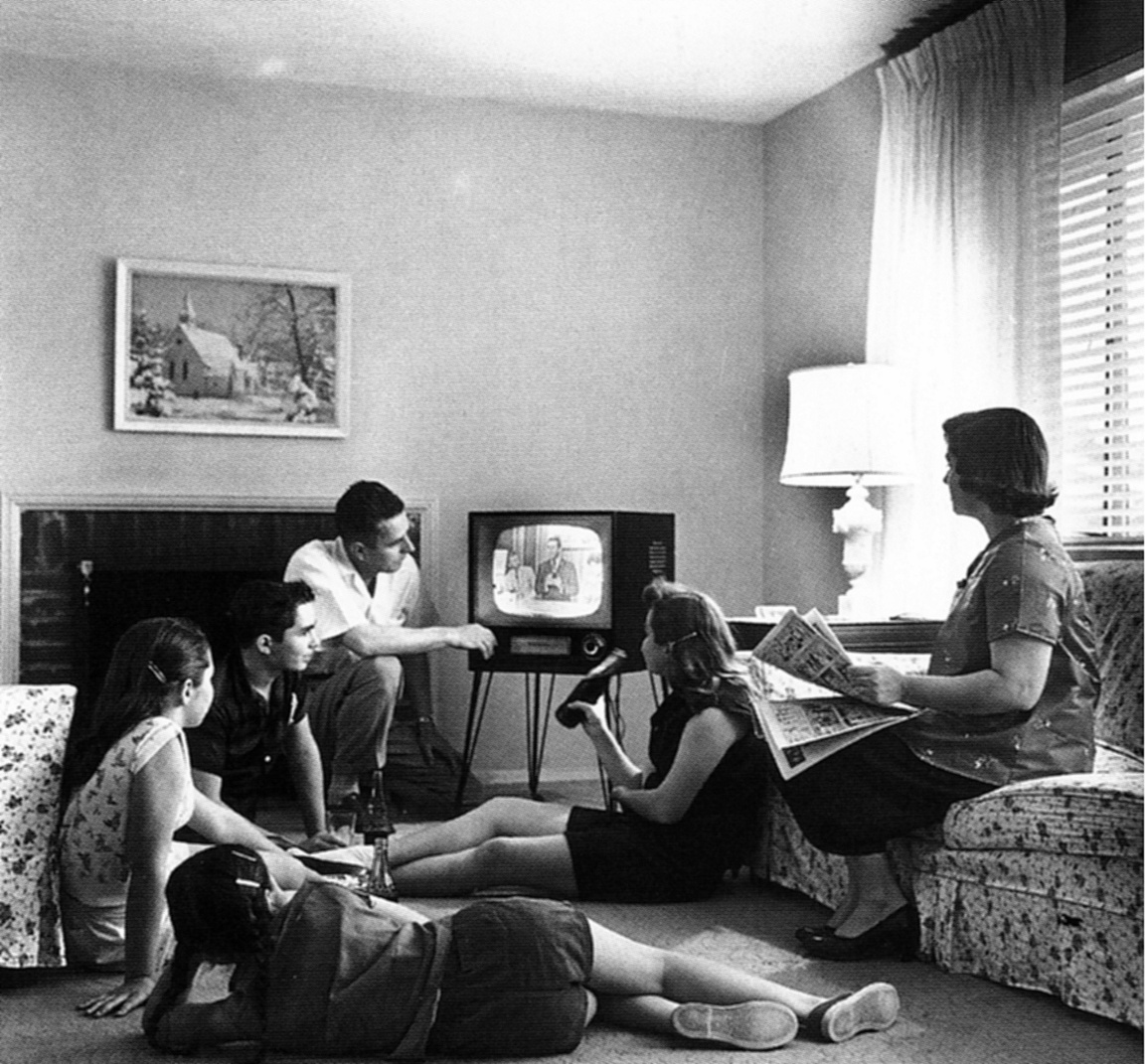Why Are We Obsessed With Crime?
By Maggie Maloney
Our fascination with mystery and murder is nothing new.

“Family Watching Television” (Wikimedia / Creative Commons)
From the viral hits in the world of true crime, like Making a Murderer and Serial, to the long-running crime shows Law & Order and NCIS, crime has entered the realm of mainstream media like never before. But the cultural obsession with crime is nothing new. In fact, we have been fascinated by crimes for decades.
“It all started with positivist theories during the late nineteenth century that inspired the first criminological museums as teaching institutions,” says Dr. Katherine Ramsland, a professor in the criminal justice program at DeSales University and the author of the upcoming book Confessions of a Serial Killer: The Untold Story of Dennis Rader, the BTK Killer. Exhibits featured weapons, poisons, photographs, tools, reconstructions, handwriting samples and even human remains.
These early displays of crime culture quickly gained a following with the public audience, who initially were interested to learn more about their own safety. “They introduced viewers to titillating tales about dangerous people that inspired curiosity,” Dr. Ramsland said. “The public wanted more, so vendors devised more products to sell. But once the market was established, its content was more difficult to control.”
Today, the content is everywhere. In 2014, the first season of the podcast Serial led 30,000 people to sign to a Change.org petition to award Adnan Syed, the podcast’s subject, a new trial based on previously unknown evidence. In December 2015, Netflix released Making a Murderer and viewers sent a similar petition, which now has over 500,000 signatures, directly to The White House, asking to grant Steven Avery a presidential pardon.
Investigation Discovery, a true crime cable channel that started in 2008, has quickly become a top five cable network for women between 24 and 54 years old, along with fans who identify as #IDAddicts. In fact, there is an entire Twitter account, @IDAddictUSA, solely dedicated to these fans. Their Twitter descriptions reads: “Predators escalate from abusing animals to rapists & murderers. The majority of victims are raped/murdered by someone they know. Forensic Science & DNA rocks!” There are over 7,000 followers who no doubt agree.
Crimes that appeal to the public are violent, grisly and show the darkest possible side of human action. So what’s the draw?
“The public loves crime because of how exciting it is to get close to the raw human energy of extreme acts, of what they considered evil,” Dr. Ramsland explains. “They enjoy the mystery that drives an investigation and they like the feeling of justice being done.”

Netflix’s ‘Making a Murderer’ quickly became one of the top four series watched by millenials, according to Tech Times. After airing, the series stirred viewers’ emotions to the point of petitioning to the White House for Steven Avery’s release. (Netflix)
Dr. Ramsland notes that certain types of crimes are more appealing than others. “It’s all about the mystery and what people can relate to,” she explains. “The type of crimes that novelists, TV series developers, talk show hosts and scriptwriters seem to think are most appealing involve killing pretty young women. For the male audience, this draws on the protective instinct and for females, it lets them experience their own vulnerability. The ‘damsel in distress’ continues to be evocative.” Dr. Ramsland said murder has more motivational dimensions versus other crimes, which adds to its public appeal despite the inherent terrifying aspect.
The same rules apply for true crime that gains an obsessive following or reporting in the media. “For crimes like the Casey Anthony case or the Jodi Arias case, it generally involves a highly emotional issue, such as mother’s killing their kids, pretty women, celebrities involved in crime or a twisty wrongful convictions” explains Dr. Ramsland. “Usually there’s a mystery of some type, and a great deal of room to argue for one side or the other.” But there are certain types of crimes that Ramsland believes are too disturbing to achieve mainstream media attention, including crimes against children and elderly crime.
But as much as we love crime, the media’s mass coverage of it may be responsible for some negative effects on society. “Some crimes are contagious,” Dr. Ramsland says, “especially those that are glamorized or viewed as a path to fame.” She pinpoints the show Dexter as one example that has inspired a few real life murders, and the Columbine school shooting that has unfortunately inspired equally disturbing and disastrous copycats. “Many offenders want to achieve a record, so they won’t be forgotten. Some offenders purposely study others.”
Even with the concerning media effects in mind, there seems to be no slowing down to the trend of consuming true crime as evident by today’s popular culture and the nagging thirst for more stories. As a meme featured on the IDAddictUSA Twitter page states: “Rainy days are for cuddling and watching serial killer documentaries.”

